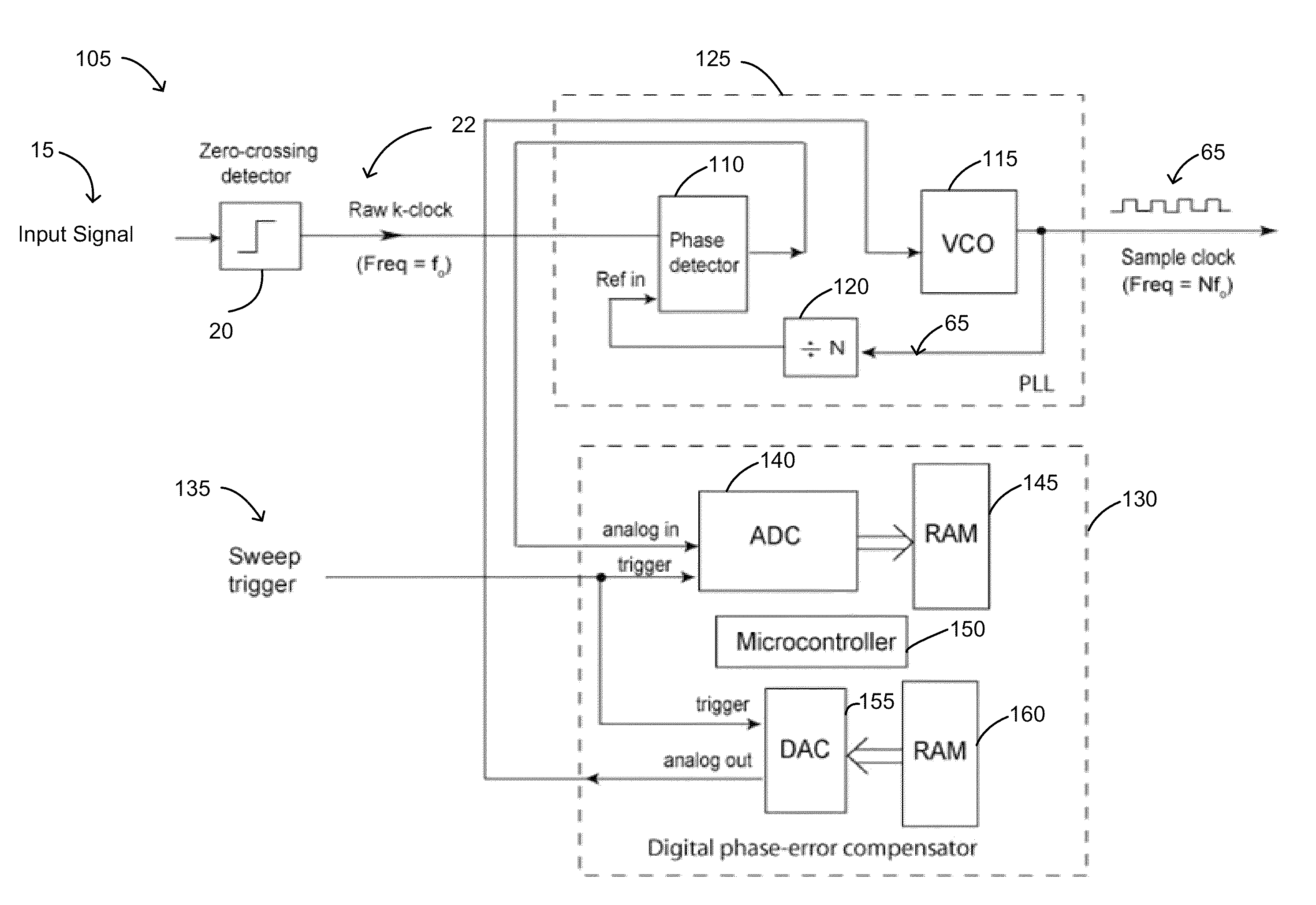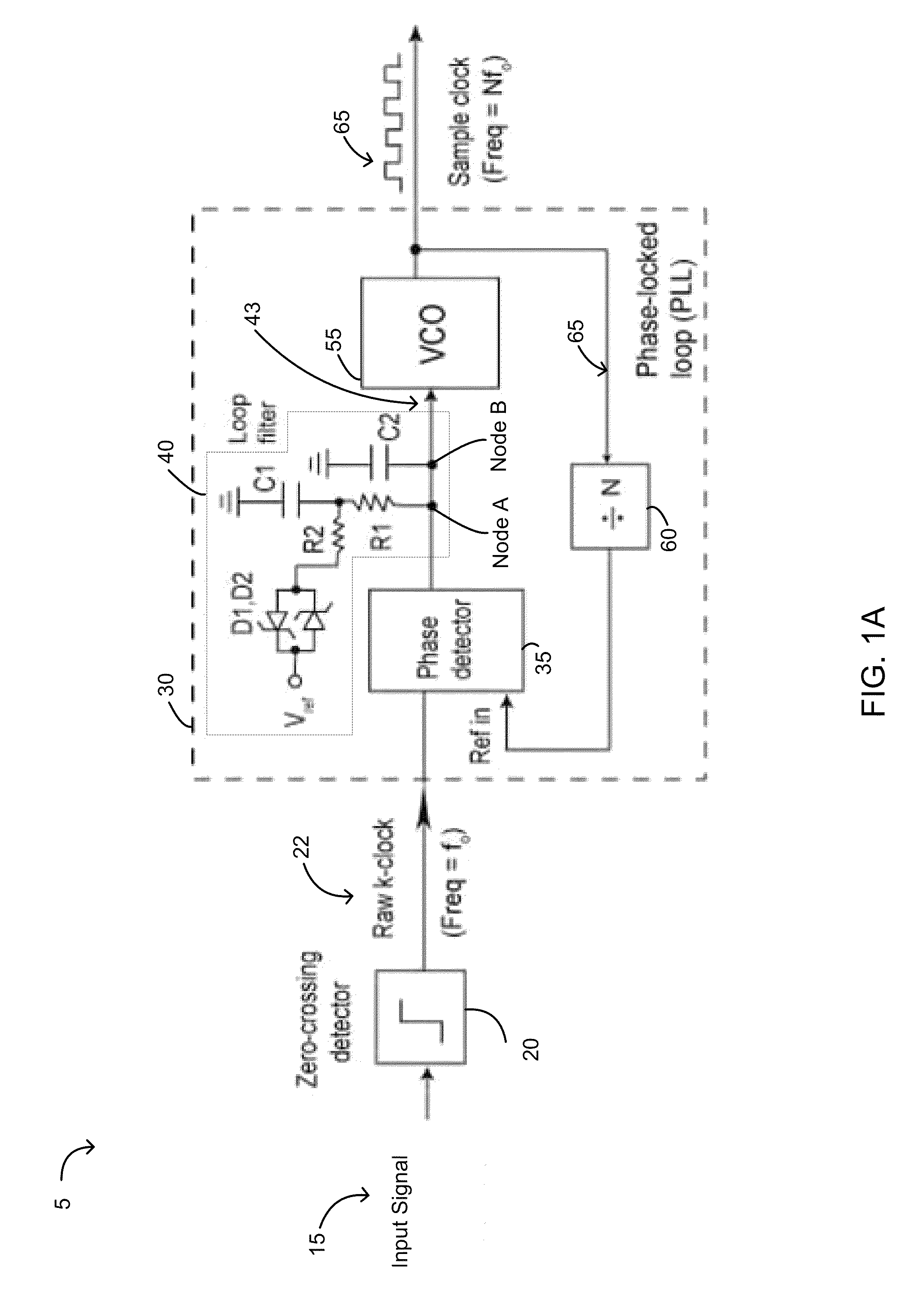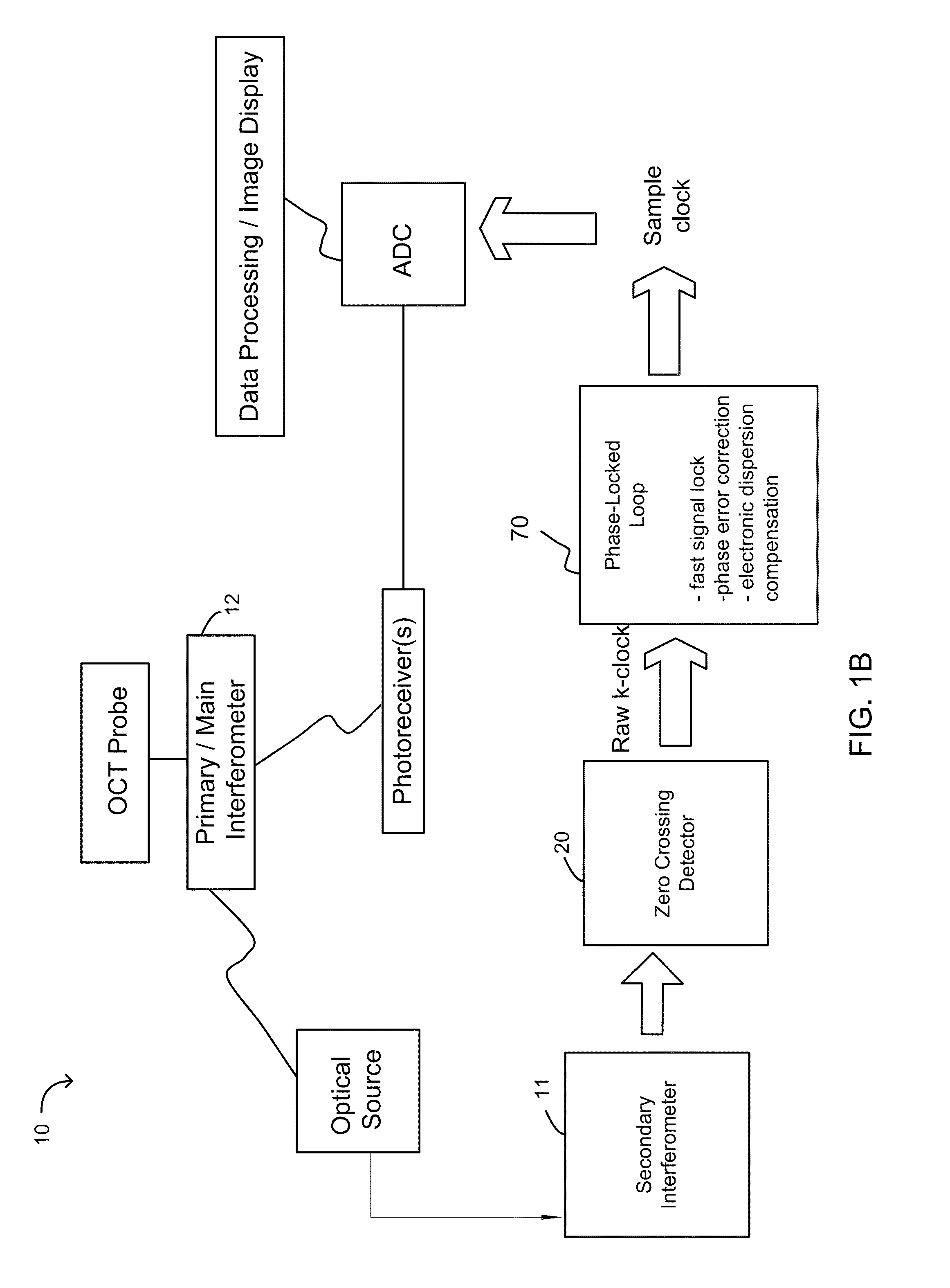Phase-lock loop-based clocking system, methods and apparatus
a clocking system and phase lock technology, applied in the direction of electrical equipment, pulse automatic control, etc., can solve the problems of high noise component of data and images formed from such data, jitter, noise, etc., and achieve the effect of reducing noise in the clock signal
- Summary
- Abstract
- Description
- Claims
- Application Information
AI Technical Summary
Benefits of technology
Problems solved by technology
Method used
Image
Examples
Embodiment Construction
[0029]Swept-source OCT systems (also called frequency-domain or scanning-laser OCT systems) are complex systems that include multiple electrical and optical signals as inputs and outputs. For example, OCT systems can include optical sources, electro-optical converters, interferometers, couplers, probes, clock generators, and other components. The transmission and receipt of optical and electrical elements between such components, as applicable, can result in unwanted noise, jitter, phase changes and other effects. In part, embodiments of the invention employ one or more phase-locked loops (PLLs) to address some of the issues relating to signal clocking and synchronization.
[0030]Specifically, synchronizing data collection and operation of the optical source has particular challenges in OCT. Synchronizing the analog-to-digital conversion of the OCT data signal with the instantaneous optical frequency of the tunable light source using a typical clock generator can lead to unwanted effe...
PUM
 Login to View More
Login to View More Abstract
Description
Claims
Application Information
 Login to View More
Login to View More - R&D
- Intellectual Property
- Life Sciences
- Materials
- Tech Scout
- Unparalleled Data Quality
- Higher Quality Content
- 60% Fewer Hallucinations
Browse by: Latest US Patents, China's latest patents, Technical Efficacy Thesaurus, Application Domain, Technology Topic, Popular Technical Reports.
© 2025 PatSnap. All rights reserved.Legal|Privacy policy|Modern Slavery Act Transparency Statement|Sitemap|About US| Contact US: help@patsnap.com



